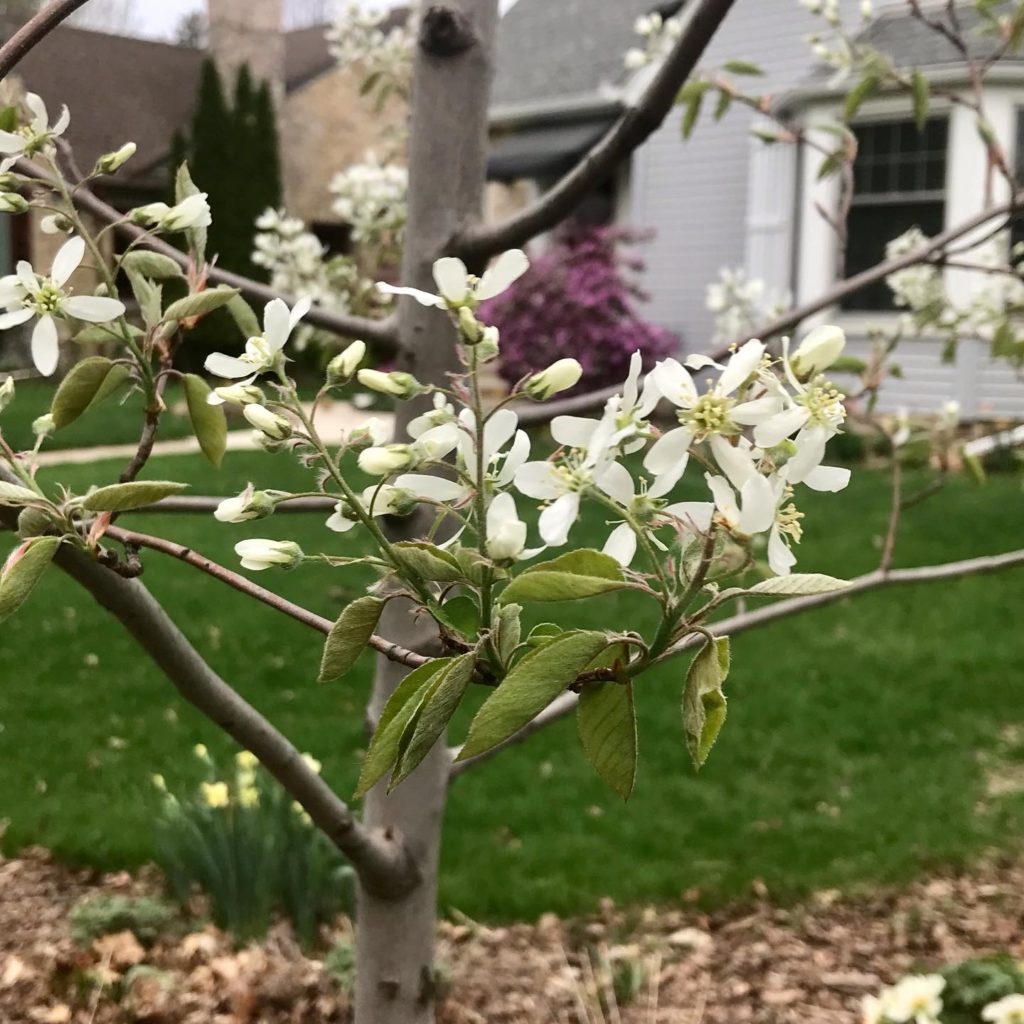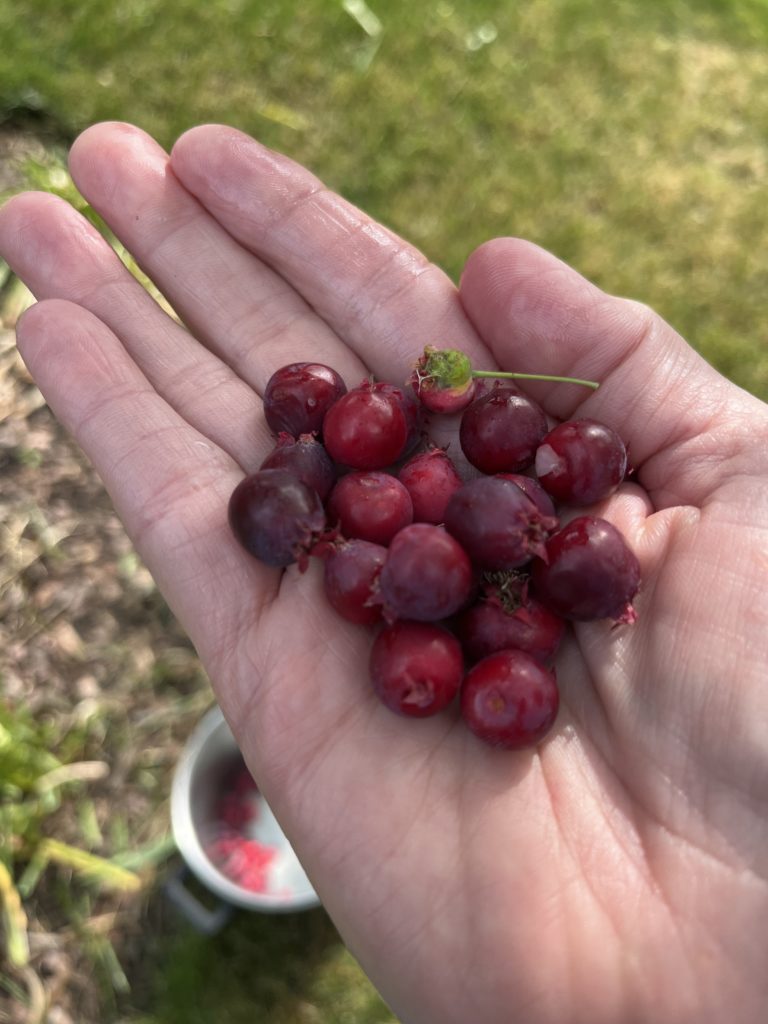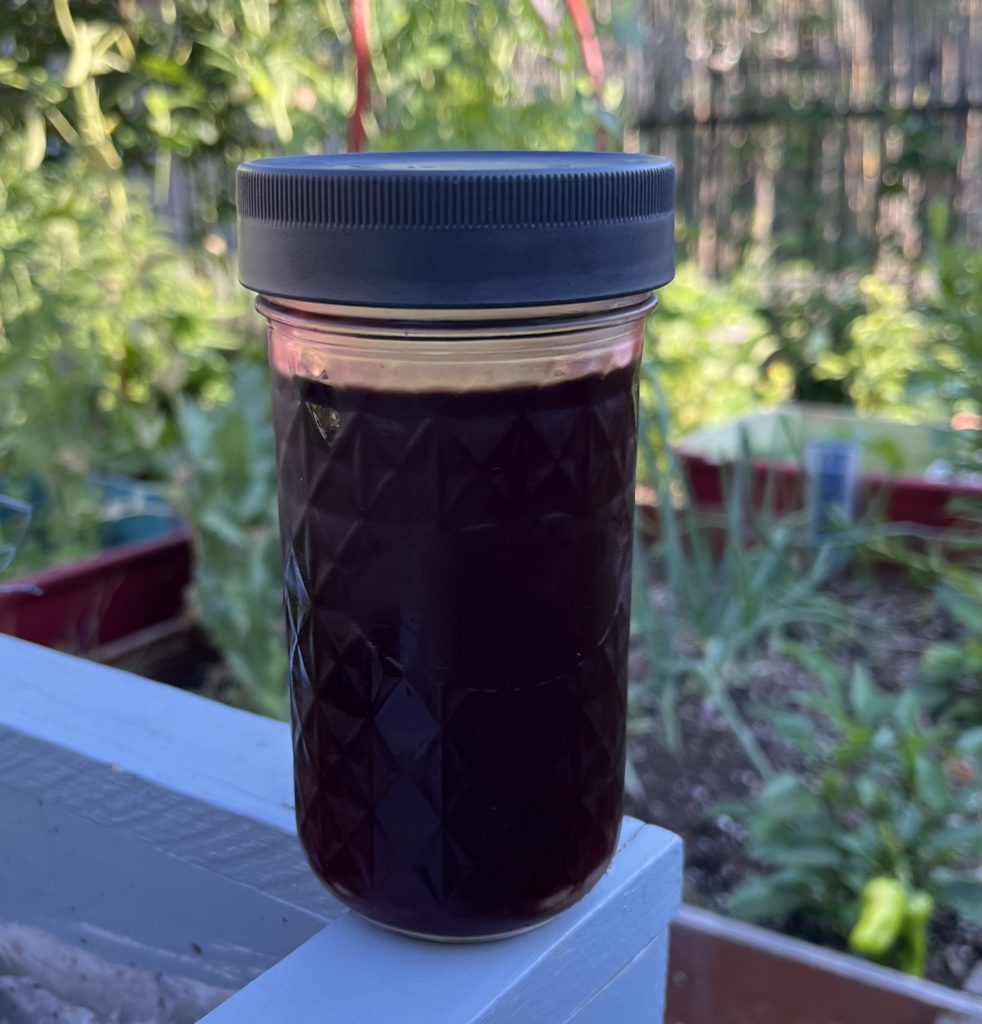Serviceberries are my new favorite fruit for cold-climate gardeners to grow. They are easy to grow, tasty and don’t seem to be bothered by insects or disease—though birds will fight you for the harvest. Serviceberry (Amelanchier spp.) can be grown as a multi-stemmed, tall shrub or a single-stemmed tree. Several species are native to Minnesota and all of them offer spring blooms, fall color and a delicious berry, which I love to make into serviceberry syrup.
I planted an ‘Autumn Brilliance’ serviceberry in my front yard in 2018 and it has produced an abundance of sweet, purple berries the past two years. The plant is sometimes called “juneberry” because the berries ripen in late June. More about the plant below, let’s get to making the delicious serviceberry syrup.
Making the Syrup
This recipe is not precise and a lot depends on how many berries you have and how sweet or thick you want the syrup. Harvest the berries when they are purple in color for the best flavor. Rinse them and pick out stems and damaged berries.
For a thin syrup that is great added to cocktails or mixed with fizzy water for a refreshing drink, I combined 8 cups of serviceberries with 2 cups of water and 1 cup of sugar in a heavy bottomed pan. Serviceberries are sweet — you do not need much sugar. Bring the mixture to a boil and then simmer it for about 15 minutes. The berries should look pale and the liquid a deep purple-red color. Let it cool a minute or two, then pour the liquid and berry bits through a strainer. I used a jelly bag, but any tight sieve would work fine. Gently press on the berries to extract as much syrup as you can. Add the juice of one lemon to the mixture. Store it in jars in the refrigerator or freeze for later use.
This is a very flexible recipe. For a thicker syrup, add less water. For a more tart mixture, add more lemon juice or reduce the sugar. Or, try lime juice for a more tropical vibe.
How to Use
For a refreshing soft drink, mix about a quarter cup of the syrup in a tall glass with ice and pour some sparkling water over it. I’m not a huge mixed drink person, but this Serviceberry Sour sounds rather delicious. Serviceberry syrup is often used in a Gin Fizz as well.
While syrup is great, you can use serviceberries in any way you would use a blueberry or raspberry, such as a cobbler, muffins or in pancakes. I had a big harvest this year and have reserved some berries for baking.

More about Serviceberries
When you ask northern landscapers for tree recommendations, especially for urban landscapes, nine times out of 10, serviceberry will be on the list. It’s a relatively small tree, with heights ranging from 10 feet to 40 feet tall, depending on the species. Several serviceberries are native to Minnesota, so they can handle our cold climate well, even in USDA Zone 3. They are also a very pretty tree, with a nice white blossom in spring, followed by the purple berries, then a reddish fall color, especially on the Autumn Brilliance cultivar.
Serviceberries are not picky about sun or soil, and do well in partial shade. They do like a bit of moisture but grow well if their roots are in constantly damp soil. They like drainage. As with any tree, take care in how you plant your serviceberry and keep it well watered through the first year.


I love your posts.
Playing with light in a winter garden was a revelation to me.
Now I have a question–I am quite sure that we have several Juneberry trees/shrubs on our cabin property near Hinckley and I am ready to make syrup but no one mentions the pits. My Juneberries have rather large pits considering the size of the berry–is that right? Am I mistaking these reddish-purple gems for something else?
You may have a different type of serviceberry or a different plant entirely. My berries have small seeds — kind of like a raspberry. If it is a serviceberry (I would double check with a local extension agent or nursery owner), you could strain the seeds out when making syrups or jams.
I’m so glad you enjoy the blog!
Upon more investigation I have found a site that differentiates Service Berries from Chokecherries. Apparently they are easily confused. I definitely have Chokecherries, with the pits. These are also edible but not so sweet. I will have to wait another month or so for the fruit to ripen and hope the birds and our local bear don’t get to them first!
[I found excellent info on the Beringia South website.]
I don’t have service berries, but I planted an elderberry (for the birds) and it did well for about four years but then it died. There was nothing to do but take it down. And then – there were numerous elderberry shoots coming up in that spot. We took out most of the shoots and now we are watching the shoots to grow.
Elderberries are pretty resilient! Enjoy yours, Pat!
Great and interesting article! Thanks for sharing with us 🙂